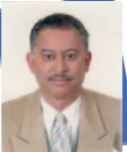Opinion
Terminal changes
The TIA needs extensive administrative and technical reforms if it is to clean up its tarnished image
Birendra Kumar Singh
The old Gauchar Airport has undergone tremendous changes since the first aircraft, a vintage Beechcraft for the then Indian Ambassador to Nepal, landed here in Kathmandu. Not all changes have been positive, though and the
airport, now known as the Tribhuvan International Airport (TIA), has become infamous for the poor state of its infrastructure.
After the dawn of multi-party democracy in Nepal, the doors were flung wide open for private airlines, which further increased after the implementation of the Liberal Sky Policy. Since then, many private airlines have started their operations, bringing various kinds of fleets into Nepal's skies. But the increase in air traffic also brought many problems for the TIA's administrative staff and air traffic controllers. The airport needed better planning, thought provoking ideas and public awareness if it was to keep up with the times. Unfortunately, this hasn't quite happened. Hence, the call of the day is meticulous planning, hard work and modernisation.
Much effort and great investments have been made by not just by the Nepal government but also various friendly countries to better the TIA—installation of radar by the Japanese Government, airport lighting by the French Sofravia Company and the extension of the runway to the current 10,000ft length by OPEC. Yet, much still needs to be done, especially on the administrative side.
Administrative reforms
First, the TIA general manager (GM) must have the right to take final decisions for all agencies associated with the airport, inclusive of customs and immigration (which fall under the purview of the Home Ministry). This way there will be better cooperation and coordination. For this, various related acts, rules and regulations need to be amended. Presently, there are too many bosses running TIA and nothing is done as no one follows the directives of the GM. So to make things run smoothly, perhaps we need to upgrade the status of the GM to on par with the customs or immigration department.
The lack of authority vested in the GM manifests in various ways. For example, the number of open airport counters is always lacking. During rush hours, the counters are overwhelmed and work is always backed up. If someone does go and talk to the officers present, they are either obstinate or they provide stock answers: “We do not have enough manpower. The queue is not that long to justify opening a second counter or we are doing our best..." This is all because the TIA immigration office knows that it is the boss and not the GM so passengers are at the mercy of the immigration office and not the other way round.
Second, TIA employees must be made to feel that it is their airport and all should take responsibility for mundane day-to-day affairs like seeing that the windows are shut when the air conditioner is running; that people do not sit on the conveyor belts; that the premises are not littered; and that the toilets are not filthy. These small gestures will add up and contribute to making TIA a better place for entry and exit.
Technical reforms
There is a need for widespread technical reforms at TIA too. For example, there are enough trolleys but not many that are well maintained and run smoothly. Trolleys should be available for all flights ie, from the very first Turkish Airways flight to the last Qatar Airways flight. This way, passengers will not have to make frantic grabs for trolleys. This scribe has always had very poor experiences of the scarcity and mismanagement of trolleys.
Another infrastructure related issue is that of toilets. Even though the sorry state of the airport toilets is mentioned frequently by all travelers and in the media, nothing has been done to improve it. This is because no one has been allocated the duty of making sure that the toilets are clean throughout the TIA's duty period.
Similarly, the interval between the arrival of passengers' baggage from the ramp area to the arrival area is too long. This is a chronic problem that has been plaguing the TIA from the very beginning. Yet, neither the airlines nor the TIA staff has done anything or even tried to rectify this embarrassing situation. I have had the liberty to time the exact duration of baggage arrival from the ramp area to the arrival area. The average amount of time is around 45 minutes. Furthermore, not only are the conveyor belt distorted and dysfunctional but the baggage is not carried properly and is often tossed to the floor.
Another badly needed reform concerns that of the airport taxis. There has been some improvement regarding this and some old taxis have been removed from service to make way for new ones. This is a very heartening and welcome step but more needs to be done. There should be a dress code, nametags and drivers should be made to communicate courteously and if possible, in English. This will only help uplift the TIA's tarnished image.
These are only some suggestions gleaned from my years of experience while depl-oyed at the TIA. These issues must be taken seriously and improved upon, as they are not that difficult to do. Eventually, such im-provements are sure to bring a sea change.
Singh is a former Joint Secretary at the Ministry of Civil Aviation and Tourism ([email protected])




 18.12°C Kathmandu
18.12°C Kathmandu










